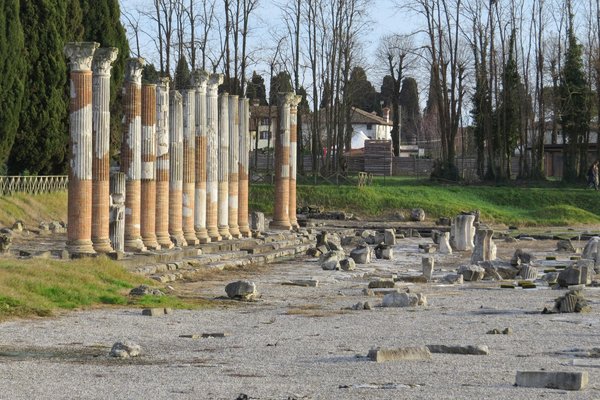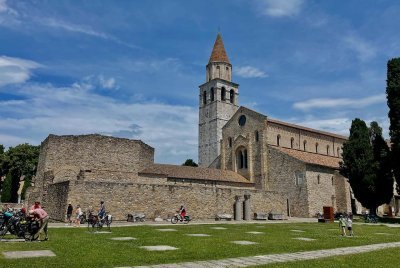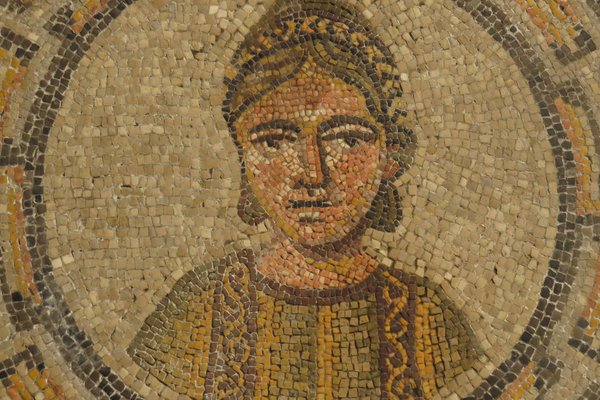Italy
Aquileia
The Archaeological Area and the Patriarchal Basilica of Aquileia comprise the remains of a city from the Early Roman Empire, which continued to be of importance in the Christian era.
The Ancient Roman City, which was one of the largest and wealthiest of the early Roman Empire, is mostly unexcavated, with traces of the forum, the river port, tombs and residences visible above ground. The Patriarchal Basilica’s main feature is its original, 37x20m mosaic floor, which dates back to a previous incarnation of the building from the 4th century.
Community Perspective: You come here to see the mosaics; fortunately they are well-preserved and well-displayed. Ian also tipped the 12th-century frescoes in the crypt below the apse of the Basilica, and Els has provided a comprehensive overview of all of Aquileia.
Site Info
Official Information
- Full Name
- Archaeological Area and the Patriarchal Basilica of Aquileia (ID: 825)
- Country
- Italy
- Status
-
Inscribed 1998
Site history
History of Aquileia
- 2017: Boundary change
- To include Sepolcreto (necropolis) as a minor modification
- 1998: Inscribed
- Inscribed
- Type
- Cultural
- Criteria
- iii
- iv
- vi
Links
- UNESCO
- whc.unesco.org
- Official
-
- aquileia.net — Visit Aquileia
- Related
-
- museoarcheologicoaquileia.beniculturali.it — Aquileia National Archaeological Museum
All Links
UNESCO.org
- whc.unesco.org — whc.unesco.org/
Official Website
- aquileia.net — Visit Aquileia
Related Resources
- museoarcheologicoaquileia.beniculturali.it — Aquileia National Archaeological Museum
Community Information
- Community Category
- Religious structure: Christian
- Archaeological site: Ancient Rome
Travel Information
Trieste hotspot
Recent Connections
-
Perfect Inscriptions
1998 -
Locations for playing sport
Roman circus -
Archaeological potential
"Most of it still lies unexcavated bene…
Connections of Aquileia
- Individual People
-
-
Attila the Hun
Destroyed completely by him in 452 AD.
-
- Geography
- Architecture
-
-
Restored by anastylosis
AB review :- "Some of the restoration work carried out in the decades immediately preceding and following World War II on excavated archaeological areas would not be considered acceptable by current standards. This has involved the reconstruction of colonnades using brick to fill missing portions of columns and importing stone slabs for paving, which goes beyond the limits of acceptable anastylosis. However, a more rigorous policy is now in operation, involving minimal intervention." -
Romanesque
Basilica -
Mosaic art
Mosaics in the basilica
-
- World Heritage Process
-
-
Perfect Inscriptions
1998 -
Minor modifications after inscription
2017: the inclusion of the Sepolcreto archaeological area
-
- Religion and Belief
-
-
Cathedrals
Bas di S Maria Assunta (Former Cath) -
Early Christianity
Mosaics from the reign of Bishop Theodore (314-318AD) -
Jewish religion and culture
Claim that mosaics in the "Paleo Christian museum" are from a synagogue
-
- Human Activity
-
-
Sea Ports
-
Amber
AB review - "It was also the southern terminus of the amber route, dating from prehistory, and this prized product from the Baltic was worked by Aquileian craftsmen for sale throughout the Empire" -
Locations for playing sport
Roman circus
-
- Constructions
-
-
Baths
Roman bath -
Roman amphitheatres
Roman amphitheatre -
Protective Shelters
-
Macellum
round structure of the Macellum, dated back to the Republican age (nom file)
-
- Timeline
-
-
Built in the 4th century
For the Patriarchal Basilican Complex (early 4th century origins) -
Built in the 2nd century BC
For Early Roman city: founded as a Roman colony in 181 BC, and connected to the road network
-
- WHS Hotspots
-
-
Trieste hotspot
An hour by train/bus
-
- Science and Technology
-
-
Archaeological potential
"Most of it still lies unexcavated beneath the fields, and as such it constitutes the greatest archaeological reserve of its kind."See whc.unesco.org
-
News
No news.
Recent Visitors
Visitors of Aquileia
- Alberto Rodriguez Gutierrez
- Alexander Barabanov
- Alexander Lehmann
- Aljaz
- A. Mehmet Haksever
- Ammon Watkins
- Ana Lozano
- Anna Wludarska
- Antonio J.
- Argo
- Aspasia
- Astraftis
- Atila Ege
- BaziFettehenne
- bergecn
- Bill Maurmann
- Bin
- Bodil Ankerly
- Brendan Carroll
- Bropyk
- Can SARICA
- Carlos Sotelo
- chenqtao
- Cheryl
- Christer Sundberg
- Christian Wagner
- christof
- Claire Bradshaw
- Clyde
- Cristina Erba
- Csaba Nováczky
- CugelVance
- CynthiaW
- Dagmara
- Daniela Hohmann
- Daniel Chazad
- Dan Pettigrew
- David Berlanda
- del
- Dimitar Krastev
- Dimitrios Polychronopoulos
- Dirk-pieter
- Dorejd
- Dr. Caligari
- Dwight Zehuan Xiao
- Elaine McArdle
- Elia Vettorato
- Els Slots
- Emilia
- Errol Neo
- Eva Kisgyorgy
- Evgenii
- Fan Yibo
- Farinelli
- Federico P.
- Filip Murlak
- Frederik Dawson
- FS
- Gabor
- George Gdanski
- GeorgeIng61
- GerhardM
- Gernot
- giulio25
- grimloch
- Harald T.
- Harry Mitsidis
- henrik_hannfors
- Hubert
- Hurrvinek
- Iain Jackson
- Ian Cade
- Ivan Rucek
- Jaakkotoivanen
- Jakob F.
- Jakubmarin
- Janina Lehmann
- Jarek Pokrzywnicki
- Jasam
- Jeffrey Chai
- Jens
- Jesse S 2010
- Jezza
- João Aender
- JobStopar
- Joel on the Road
- John Smaranda
- Jonas Hagung
- Jonas Kremer
- Justin
- KarenBMoore
- Karito Vies
- Kbecq
- kjluebke
- Klaus Freisinger
- Knut
- kutasp
- La Concy
- Lara Adler
- Laurey
- LaVale
- Lisu Marian
- ljowers
- Loic Pedras
- Luboang
- Lucio
- Luis Filipe Gaspar
- Maciej Gil
- Malgorzata Kopczynska
- Małgosia Łupicka
- marcel staron
- Martina Rúčková
- Max
- MaYumin
- MH
- MichaelH
- Michael Turtle
- Mikko
- Milan Jirasek
- MMM
- Monica Tasciotti
- nan
- napalm
- Nihal Ege
- PabloNorte
- Patrik
- Paul Schofield
- PeterH
- Petteri
- Philipp Leu
- Philipp Peterer
- Pincze
- Piotr Wasil
- Porcho
- Purrfect
- Rafał Kałczuga
- Ralf Regele
- Randi Thomsen
- Reiseblog
- Riccardo Quaranta
- Roccobot
- Roger Ourset
- Roman Bruehwiler
- Roman Raab
- Rudegirl
- Sabrina Liebehentschel
- Samato
- Schnitzel
- serghei.belous
- Sergio Arjona
- Shandos Cleaver
- Slavi
- Solivagant
- Stanislaw Warwas
- Stefan A. Michelfeit
- stephanvermeulen
- Svein Elias
- Szabolcs Mosonyi
- Szucs Tamas
- Tamara Ratz
- Taotao Chen
- Tarquinio_Superbo
- Tetena
- Thomas Buechler
- Thomas van der Walt
- Thorben
- Tim Allen
- Tom Flaten
- tony0001
- triath
- Tsunami
- Vanessa Buechler
- Walter
- WILLIAM RICH
- Wojciech Fedoruk
- Xiquinho Silva
- YaroMir
- Yevhen Ivanovych
- Zizmondka
- Zoë Sheng
Community Reviews
Show full reviews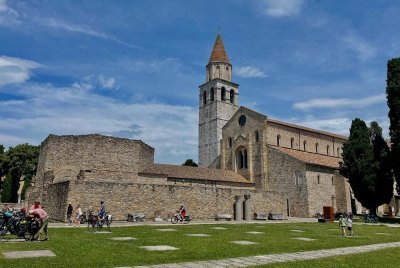
My family and I arrived in Aquileia from Grado, which served as our base for the week. The connection between Grado and Aquileia is good, with buses running between the cities every hour, and tickets can be bought at a vending machine or at the counter at the bus station in Grado. Unfortunately they don't have a platform for strollers so we had to go by car. Parking in Aquileia is not a problem, there are several paid parking lots.
Although Aquileia was one of the largest cities of the Roman Empire in ancient times, today it is a small city. Only part of the original area has been excavated so far, and individual Roman sites are scattered throughout the city. The city is easily accessible with a pram, even some of the sites are wheelchair accessible thanks to platforms, as is the patriarchal basilica (with the exception of one crypt). It takes about an hour to walk around all the excavations. At the time of our visit, the colonnade of Roman columns, which is often pictured, was under scaffolding. Although the sites are interesting, especially the remains of the harbor, the main sight is the patriarchal basilica, which I recommend saving for last. The floor mosaics are impressive, and the scenes of marine fauna are interesting, although the downside is that only small parts of the walkway above are visible. The mosaics in Sicily's Villa Romana del Casale, for example, can be viewed in much better detail. Similarly, …
Keep reading 0 comments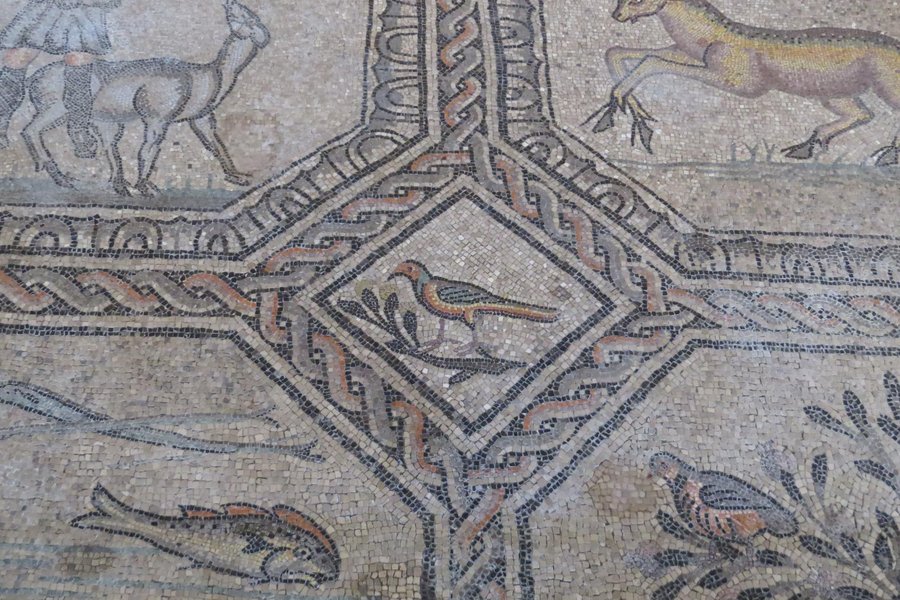
I really enjoyed my visit to this WHS, way more than I was expecting. Having seen both Roman ruins and Mosaics elsewhere, I wasn't expecting to be impressed.
However, the huge Roman Mosaic covering almost the entire floor of the Basilica is one of the most breathtaking that I have ever seen. Both its scale and content are impressive, I particularly enjoyed the fishing scenes.
Also in the Basilica are two crypts, one of Frescos, one of Excavations. I visited only the former and again, found the frescos to be better than I imagined. The colours are vivid and the emotions depicted on the subjects faces are incredible.
The cost for the Basilica and Crypt of Frescos is EUR 5, an additional couple of Euros buys you entrance to the Crypt of Excavations and another 2 euros for the climb to the bell tower.
Wandering around the additional roman ruins (for free) is a low-key event but enjoyable nevertheless, especially the warehouse and port ruins, which I haven't seen much of previously.
Keep reading 0 comments
Aquileia is a town in the far northeast of Italy, situated between Venice and Trieste. This frontier location is what made it into a WHS as well: founded as a Latin colony in 181 BC, it rose to a respectable position as an Adriatic port, trading centre, and seat of a patriarchate whose territory extended to large parts of modern Austria, Slovenia, and Croatia. Aquileia had 100,000 inhabitants in the 2nd century AD. Today, there are only 3,500, and the town has fallen almost into oblivion.
I arrived in Aquileia on a bright sunny Saturday afternoon – the town would be my base for 4 days in the wider Venice region. Originally, I had booked a hotel in Cervignano, but I cancelled it a week ago – a good choice, so it seemed, as Cervignano appeared to be nothing more than a sleepy transport hub when I passed through it getting off the train from Venezia Mestre. Aquileia is much nicer: very compact, and just touristy enough to have several restaurants and frequent bus links within the region.
The WHS encompasses the whole town center, but the focus is on the Patriarchal Basilica and the Early Roman ruins. The Basilica’s tower can be seen from afar; it is the landmark of Aquileia. I started my sightseeing here at the Patriarchal Complex. I bought my ticket at the Baptistery: for 9 EUR you receive a combination ticket that gives access to all parts of the complex. The octagonal Baptistery lies across …
Keep reading 0 comments
I went to Aquileia on a stifling day in July 2015 on my way from the Longobard town of Cividale del Friuli to Trieste Airport, which is located nearby. The tourist information office gave us a map showing that the components of the World Heritage Site were all within easy walking distance of one another. Aquileia's aren’t the most exciting Roman ruins, but they are at least free to wander around.
The centrepiece basilica complex is a rewarding visit. Be sure to go inside the smaller of the two crypts, where you will see primitive but riotously colourful frescos adorning the walls and ceilings. There is not much to see from the top of the belltower, but the 760 sq metre mosaic in the basilica is not to be missed.
I wasn't as impressed by Aquileia as some of the other reviewers, but it is a perfectly pleasant town and an interesting site for its long and distinguished history.
Keep reading 0 comments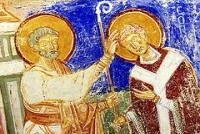
I visited this WHS in May 2014. It’s relatively unknown compared to other WHS in Italy but it truly is one of the Top WHS Italy has to offer. The huge mosaic floor is full of colour and incredible detail. The view from the belfry is nothing special although it allows you to see the cross-shaped roof of the basilica. The remaining mosaic floor from the nearby crypt can be clearly be seen here too. Although the mosaics are really special my personal highlight was the Cripta degli Affreschi with its vivid frescoes. It’s only second to the Cappella degli Scrovegni in Padua but still it’s really worth viewing.
Keep reading 0 comments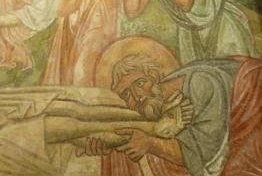
I wasn't expecting it, but the Basilica of Aquileia was astounding, one of the finest churches I have been in during all my World Heritage Site hunting.
As the other reviewers have noted the highlights are the mosaics on the floor which cover the entire surface of the Basilica. However I think I had an even stronger fondness for the incredible 12th century frescos in the crypt below the apse. The wonderful pastel colours and expressive paintings really left a mark on me, not too dissimilar to the feeling I had when leaving the Scorvegni Chapel. All in all a truly magnificent site. The fact that there are the scattered remains of a prominent Roman town strewn around this magnificent building only serves to amplify its impressiveness. I rather enjoyed walking amongst the ruins and partially restored columns whilst eating an ice cream, in fact there are very few things I could imagine that are as pleasing as this.
Even in a region which is almost drowning in cultural treasures, the Basilica at Aquileia stands out as a highlight, and it is hard to think of a bigger compliment than that.
[Site 8: Experience 6]
Keep reading 0 comments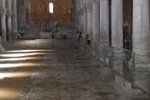
The excavation of the foundations of the Roman town are still a work in progress, but the forum with its marble columns is the most obvious remnant. Of greater importance are the 4th century floor and walls of the Basilica, contained within a building only 1000 years old. The ancient mosaics and frescoes are in pristine condition and well displayed.
I reached Aquileia from Venice by travelling by train to Cervignano, and taking the Grado bus from there to the Archaeological Museum in Aquileia.
Keep reading 0 comments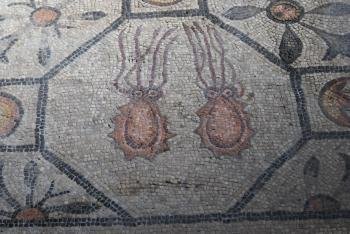
The main sight in Aquileia is the basilica. The oldest remains dated from the 4th century, but the basilica was destroyed, reconstructed and extended during the ages. The church, which can be seen today dated from the 11th century. The basilica is huge compared to the small town and one can image that Aquileia was a large and important city during the Roman Empire. My first impression from the outside was, that it looks similar to many other churches I had visited in northern Italy. However, I completely changed my mind when I entered the interior. Usually when visiting a church, one looks first to the ceiling. In Aquileia, the main attraction is the mosaic pavement from the 4th century. The mosaic covers the entire floor of the nave and shows animals, fishermen, marine animals, and Christian scenes. It lies below the current floor level, you can walk around on footbridges. The mosaic is magnificent, just like the well preserved frescoes in the crypt and the apsis. I also enjoyed my stroll to the remains of the Roman harbour, the Forum and the Via Sacra. All in all a worthwhile daytrip from Venice or, if you come from the northeast, a perfect start for a trip to the Veneto.
Keep reading 0 comments
It's hard to believe that this is the first review for Aquileia. There were many other visitors when I was there, and the site is very close to Venice and the tourist resorts on the Upper Adriatic. Anyway, Aquileia is a famous and familiar name for anyone who has ever read something about ancient history. Before the rise of Venice, it was by far the most important town in this region and a commercial as well as a religious centre, which it remained long into the Middle Ages. Much of it was destroyed during the Late Empire, most famously by the Huns, but there are still many relics to see. The Patriarchal Basilica is a much later building - from the 11th century -, but sits on the ruins of ancient churches and is really very impressive (especially the mosaics). Aquileia today is no big metropolis anymore, but it is still a pleasant little town, and since it is only about 90 minutes by train from Venice, this is definitely a recommended excursion.
Keep reading 0 comments
